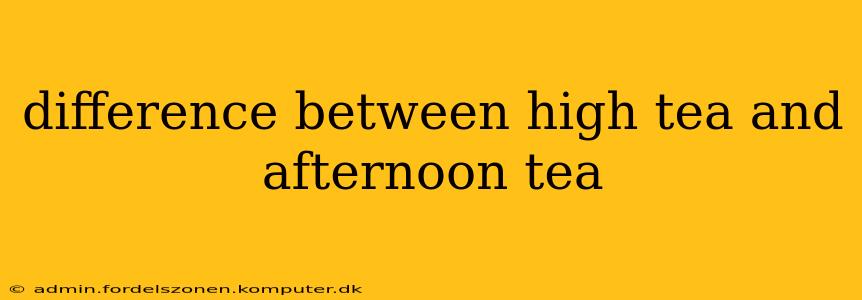The terms "high tea" and "afternoon tea" are often used interchangeably, leading to much confusion. While both involve enjoying tea and refreshments, they represent distinct traditions with significant differences in timing, setting, and the food served. Understanding these nuances will allow you to navigate the world of tea parties with confidence and grace.
What is Afternoon Tea?
Afternoon tea, the more formal and elegant of the two, originated in the 1840s with Anna, the 7th Duchess of Bedford. Feeling peckish between lunch and dinner, she requested tea, bread and butter, and cake be brought to her room. This simple act evolved into a fashionable social ritual amongst the upper classes.
Key characteristics of Afternoon Tea:
- Timing: Typically served between 3 pm and 5 pm.
- Setting: Usually a formal setting, often in a hotel, tearoom, or elegant home. Expect fine china, silverware, and a refined atmosphere.
- Food: A tiered stand is the centerpiece, showcasing delicate finger sandwiches (cucumber, smoked salmon, egg salad are common), scones with clotted cream and jam, and a selection of pastries and petit fours. Champagne or other alcoholic beverages may be offered.
- Atmosphere: Refined, elegant, and often a social occasion.
What is High Tea?
High tea, in contrast, is a more substantial and informal meal. It's not as closely tied to social status or specific rituals as afternoon tea.
Key characteristics of High Tea:
- Timing: Served between 5 pm and 7 pm, bridging the gap between the working day and dinner.
- Setting: Less formal than afternoon tea. It could be enjoyed at home, in a pub, or a less formal tea room. The emphasis is less on elegance and more on hearty fare.
- Food: A much more substantial meal, often including bread, meat pies, cold cuts, cheeses, and pastries. Think of it as a light supper rather than a dainty snack.
- Atmosphere: More casual and relaxed, often a family meal or a less formal gathering.
What are the Main Differences Between High Tea and Afternoon Tea?
Here's a table summarizing the key distinctions:
| Feature | Afternoon Tea | High Tea |
|---|---|---|
| Time of Day | 3 pm - 5 pm | 5 pm - 7 pm |
| Setting | Formal, elegant | Less formal, casual |
| Food | Delicate finger sandwiches, scones, pastries, petit fours | Hearty meal including bread, meats, cheeses, and pastries |
| Atmosphere | Refined, social | Relaxed, family-oriented |
| Origin | Duchess of Bedford's invention | Working-class tradition |
| Social Status | Associated with upper class initially | Associated with working and middle classes |
Is High Tea Considered a Proper Meal?
Yes, high tea is considered a proper meal, albeit a lighter one. It's designed to fill the gap between the late afternoon and dinner, serving as a substantial snack or light evening meal. Unlike afternoon tea which functions more as a social ritual with a light repast.
Where Did High Tea Originate?
High tea's origins lie in the working classes of the 19th century. Workers, who finished their workday in the late afternoon, would gather for a substantial meal before their evening. The name "high tea" likely comes from the practice of having this meal at a high table or a raised surface.
What Makes Afternoon Tea Different from High Tea?
The core difference boils down to formality, timing, and the nature of the food served. Afternoon tea is a delicate, elegant affair, focused on social interaction and dainty treats. High tea is a more hearty, practical meal, serving as a bridge between the workday and dinner. Understanding these distinctions allows one to fully appreciate the richness and diversity of tea-time traditions.
